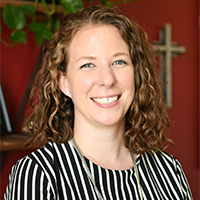Book Review: "The College Dropout Scandal"
This article is part of NASFAA's occasional book review series, where members share their reflections on books, published within the past five years, on higher education themes of interest to financial aid professionals. The opinions offered and statements made do not imply endorsement by NASFAA or the authors' employers and do not guarantee the accuracy of information presented. Would you like to suggest a book for a future review? Email us at [email protected] with your recommendation.
In a book titled "The College Dropout Scandal," author David Kirp examines the issue of non-completion in higher education and whether the issue can be remedied. Kirp outlines six strategies that colleges and universities nationwide may be able to employ to reverse the trends that lead to students dropping out of college. The book "will get your brain churning about creative ways to approach a serious problem that needs to be addressed," writes practicing financial aid administrator Tayler Kreutter, who read the book and shared her unbiased opinions of its content at the request of NASFAA. What follows are her takeaways, thoughts and reflections. The NASFAA Readers Club also discussed this book in its inaugural meeting this week. To sign up for our next meeting, visit the Readers Club web page.
 Reviewed by Tayler Kreutter, Executive Director of Student Financial Services at Roberts Wesleyan College
Reviewed by Tayler Kreutter, Executive Director of Student Financial Services at Roberts Wesleyan College
Statistics are a powerful tool to set the stage for a "dirty little secret" about higher education that isn't getting enough public attention: Forty percent of college freshmen never graduate (p. 4). David L. Kirp, a professor at University of California, Berkeley's Goldman School of Public Policy, opens his latest book, "The College Dropout Scandal," with a barrage of staggering numbers on college completion, such as these:
- 34 million Americans over the age of 25 have some college credits but dropped out before receiving a diploma.
- College dropouts are almost twice as likely to be unemployed as college graduates and are four times more likely to default on their student loans.
- Fewer than 60% of college freshmen graduate in six years — a rate that has stayed consistent over the past decade.
- Federal Pell Grant recipients, which total one-third of the college population, have a 20% lower rate of graduation in six years than higher-income students who do not qualify for this subsidy.
Can these issues be fixed? This is the looming question explored by Kirp as he walks readers through six strategies, developed and applied at eight schools (Georgia State University, City University of New York, Rutgers University-Newark, Valencia College, University of Central Florida, University of Texas, Long Beach State, and Amherst College), that other colleges can use to reverse these trends. These strategies include the following:
- Use information to help students choose the school that best fits their needs. High-achieving students from what Kirp refers to as "new-gen" families (low-income, minority, and first-generation college-goers) often don't consider applying to highly competitive schools because they don't have the information they need to see those institutions as viable options. In a study cited in the first chapter, a comprehensive information packet (outlining anticipated costs, academic programs available, and available campus supports) helped low-income students with high SAT/ACT scores enroll in a more selective institution with higher graduation rates.
- Use powerful messaging to nudge students. While being admitted to college and accepting an offer of admission are big steps, they do not guarantee matriculation. We have come to know the phenomenon of accepted students failing to matriculate as "summer melt." In 2017, Georgia State tested a "nudge" approach using a text messaging campaign meant to keep the most vulnerable students on the path to show up in the fall. At Georgia State, these nudges reduced summer melt by 20% and added about 400 students to the freshman class.
- Use data to identify struggling students earlier. Many colleges are making a conscious effort to base their decisions on sound research rather than hunches, and big data can help. Using data, college administration can identify and provide additional support to students who are struggling, find and address obstacles preventing students from progressing, or help students find the most likely pathway to success. Kirp does warn that data must be used carefully to avoid negative effects like stereotyping or unintended consequences such as students dropping out after turning a "You're at risk" email into a self-fulfilling prophecy.
- Use small, brief interventions to remove barriers. Kirp discusses several studies demonstrating the power of storytelling, especially when incoming students believe the stories originate with new-gen junior- or senior-level peers. Through these stories, new students visualize themselves as juniors and seniors and come away with the message, "Keep going and have faith in yourself." This combats the "imposter" sense many new-gen students have—that is, the impression they were admitted "by mistake" and don't belong—and promotes a mindset of belonging that becomes integral to believing they can stay in school and succeed.
- Use creativity to restructure curriculum. Complex classes like remedial math can be a stumbling block that prevents students from persisting. Kirp describes how curriculum writers at the Carnegie Foundation designed a remedial math course that takes students from basic fractions to college-level statistics in a single year using a psychology-based "mindset" approach. This approach boosts students' confidence by making the content practical, employing reasoning instead of memorization, and addressing students' fear of math — and it's working.
- Use the higher education community to connect opportunities for students. About 40% of all first-time college students enroll in community colleges, and about 80% of those students say that earning a bachelor's degree is their goal. Kirp urges community colleges and universities to connect and create significant partnerships to ensure there are few or no institutional barriers between the two.
Kirp repeatedly points a finger at upper administration and faculty on college campuses as having the power to reduce college dropout rates by examining their priorities. Are we focusing on our students' success, or are we too busy trying to climb the ladder of national rankings and collect tuition dollars to notice that our students aren't satisfied and aren't graduating?
After leading readers on a journey through the transformations made at these institutions, Kirp leaves us with his formula for success by outlining six critical qualities possessed by the top administrators at the institutions highlighted in his book:
- An abiding commitment to make student access and success their institution's top priority
- A focus on getting their students engaged in their studies and connected to the campus community
- A willingness to question ‘this is how it's always been done' cultural orthodoxies
- The recognition that decisions should be based on data rather than hunch
- The skill to create a compelling vision for change and evoke a sense of urgency for that change
- The tenacity to turn that vision into on-the-ground reality (pp. 134-135).
One fact remains astoundingly clear: The formula for success will present itself differently at each institution. There is no single action plan upper administration at colleges can use. It takes a skilled leader to identify which carrot and stick to place where and to be flexible enough to see and act on more than one fix.
Where do we start? Kirp answers this with a quote from Josh Wyner, executive director of the College Excellence Program at the Aspen Institute, a non-partisan forum for values-based leadership: "We need a national strategy to get leaders who know how to improve their students' lives. They need to build a culture that's student-success oriented, to determine the most strategic resources and to build partnerships with the public schools, universities and employers in their community" (p. 138).
Kirp concludes, "When institutions get serious about the dropout crisis, the consequences can be dramatic." The eight schools Kirp highlighted are bright spots that other institutions across the country can look to for examples of how to turn things around; but make no mistake — institutions still need courageous leadership and money to transform good ideas into action.
Overall, I enjoyed this book and felt it was a relatively quick read. I think it would be worthwhile for those who are either interested in this "scandal" or have tried to find solutions for their own institutions to help the drop-out rate. While it doesn't present you with a one-size-fits-all institution model, it will get your brain churning about creative ways to approach a serious problem that needs to be addressed. Will we, as higher education professionals, be the group that starts to bridge this gap and get more students to complete their degrees? Kirp hopes so, but it's up to us to start talking about what needs to change at each of our institutions.
Tayler Kreutter is the executive director of student financial services at Roberts Wesleyan College, a private Christian liberal arts college in Rochester, NY. She holds a Bachelor of Arts from the College at Brockport, SUNY and a Master of Education from the Warner School of Education at the University of Rochester. She is actively involved in the New York State Financial Aid Administrators Association (NYSFAAA) as co-chair of her region, and she serves as a member of the Mentoring Committee for NYSFAAA.
Publication Date: 12/12/2019





You must be logged in to comment on this page.